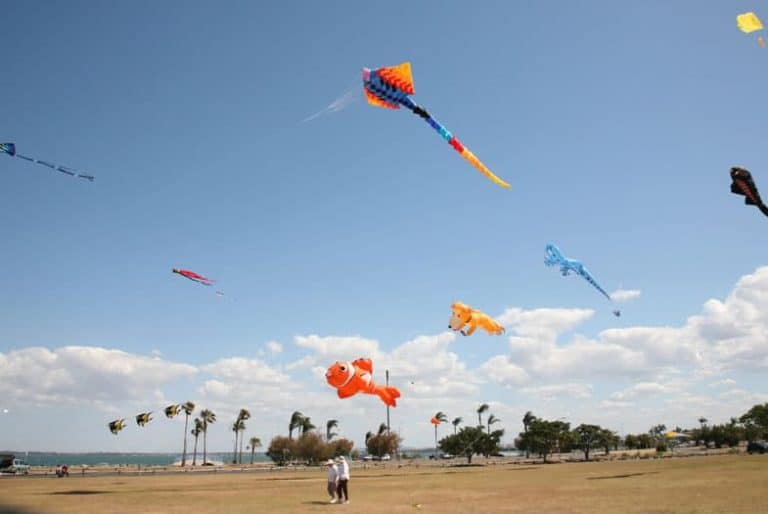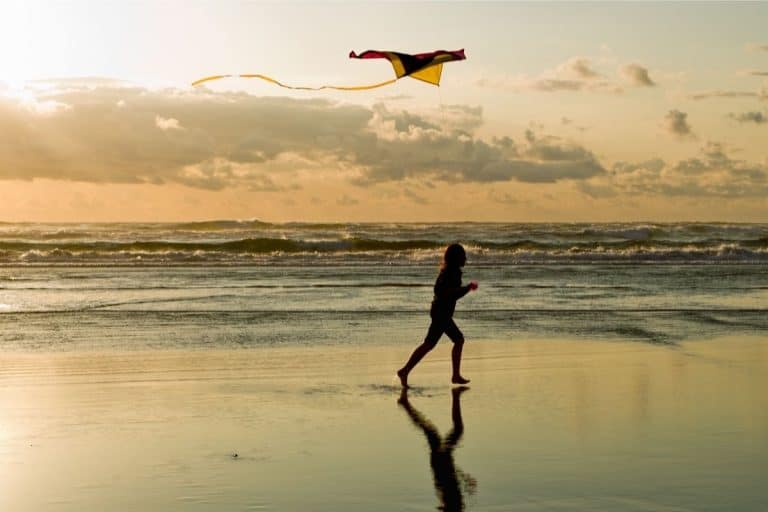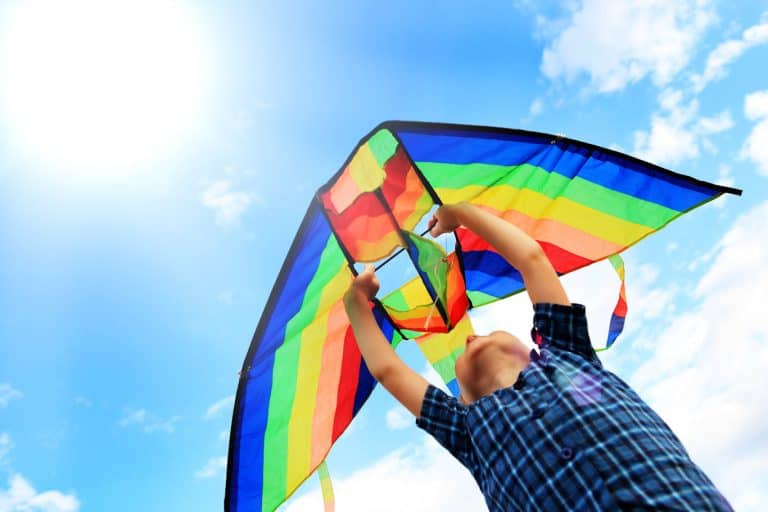What Is the Keel Of A Kite? (We Find Out)
There are various parts that make a kite whole and effective. A keel is one of those parts. In this article, we will look into keels, what they are, and the role they play in kite flying,
Keels act as a replacement for bridles. They have various sections where you can attach the flying line. They also help in keeping the kite stable, functioning similar to a typical kite tail.
What Are The Parts Of A Kite Called?
Kites consist of three main components. These are the wing surface, the line, and the bridle. The wing surfaces are shaped to allow the wind to lift them. The lines are also known as tethers, and their length determines how high the kite can go. The harness holds the kite’s face toward the wind (Source).
While there are various types of kites, they all have similar features. Kites act against the air, creating two forces (Drag and lift). Tail bridles on the kite control the kite’s face so that the wind can raise it. However, not all kites require bridles, and they, therefore, have a single attachment point. A good example is the box kite (Source).
Anchors
The anchor that balances the kite can either be moving or at a fixed point. Kites have been in existence for a long time and have a varied history. Kites can be flown recreationally by individuals or during festivals. Power kites require multiple lines to be flown, and they generate large amounts of force for activities such as kiteboarding. Sport kites can be flown in competitions or aerial ballet.
Do You Know the Different Parts of A Kite?
Kite flying is an entertaining sport enjoyed by people of all ages. Kites have various parts that carry out different functions. Kite flyers must be aware of the various components as they can assist when making adjustments or replacements. These parts include bridles, flying lines, frames, keels, and tails (Source).
Bridles
Bridles refer to all short lines attached to the kite’s frame. Most of these lines meet at one central point. It is at this point that the flying line is connected. On the other hand, Flying lines connect kite flyers or anchors to the kite. It can be done at the bridle or directly on the kite.
The bridle controls the kite’s angle of attack. The angle of attack refers to the angle at which the wind and the kite meet. Pull-on the kite line is usually increased when the angle of attack is higher. This causes the kite to fly at a low angle than the kite operator (Source).
Kite Frame
The kite frame is part of the wing surface. The other part of the wing surface is the kite sail. The frame is made of several sticks. These sticks are known as spars. For traditional kites, we have the vertical spar that runs from top to bottom and the horizontal spar that runs from wingtip to wingtip.
Kite Tails
Tails are attached to the end of the kite. Their primary function is to maintain kite balance and keep it pointed towards the wind. Kites can have a single tailor can have several tails. Some kites, however, are built to have proper balance and do not require. In such instances, operators can choose to add tail merely for beautification purposes.
Kite tails are made up of plastic, fabric, or paper. They provide the kite with increased drag.
Keels are also part of a kite. However, they are not as common as they were. Most of the time, they are flat and triangular, and they are found connected to the vertical spar and the flying line.
Keels
Keels are often found on delta kites.
Keels found on kites can be compared to those found on boats. They are used on kites in place of bridles. They have sections in which a flying line can be attached. Just like tails, they are used to provide kite stability. They keep the kite pointed towards the wind (Source).
Sails
Kite sails are the covers found on the kite. The spar on the kite divides the sail into four segments. The two segments at the top are the pilot sails, while the two at the bottom are the driving sails.
What Are The Sticks On A Kite Called?
Most kites require the kite frame to keep their structure supported. The frame, also known as the kite framework or skeleton, is made of kite sticks and spars. Kite sticks can be made of various materials, including graphite, plastic, fiberglass, and wood. The best wood used for this purpose includes pine, bamboo, and spruce (Source).
There are varied kite spars, with some being flexible and others rigid. It is usually dependent on their location on the kite or the kite style.
Not all kites utilize kite sticks. Soft kites, in particular, depend on the wind for their structure. It is visible when the wind inflates the kite and the kite pockets, and they get their shape. It would not be possible on a rigid frame.
Kite keels and kite tails go a long way in maintaining the kite’s balance. However, other issues do arise when attempting to balance the kite. It can occur when the kite sticks are either broken or aren’t balanced.
One can determine if their kite spars have issues when the kite repeatedly spins in one direction or when it constantly lists to a particular direction. The first step is to check if the spars are broken. If this is the case, they should be carefully removed to avoid ripping the sail. They should then be replaced to continue utilizing the kite (Source).
What Is the Spine Of A Kite?
Kites as a whole have various parts that play vital roles. The keel, as mentioned before, works in place of the harness. Keels distribute pressure on the kite’s spine. It ensures that the kite doesn’t bend and maintains its shape even in strong winds. Keels also have several areas where the kite flying line can be attached (Source).
There are various tail configurations in the market. They include thick, thin, y-shaped, u-shaped, and others for light and strong winds.
Flying lines are a significant component of kites, and flying kites would be impossible without them. These lines create tension that ensures kites utilize the wind to stay afloat. Lines of different strengths are required for different kites. These lines should be strong enough to sustain in high wind conditions and small diameters to ensure minimal drag from the wind’s resistance.
Spars are also known as sticks, and they hold the kite sail. They have vertical spars and horizontal spars. The vertical spars run from the top to the bottom of the kite. They are also known as spines. The horizontal spars run from wingtip to wingtip. They are also known as cross spars (Source).
What Are The Angles Of A Kite?
The bridle controls the angle of attack of a site. It is at this angle that the kite and the wind meet. In aerodynamics, this means the angle between the wind’s direction and the wing’s chord. The amount of lift that a wing generates directly relates to the angle of attack.
When the angle of attack is low, the tension on the kite string is lowered. When the attack is higher, the string’s tension increases, and more lift is generated. When kites stall, this results from the angle of attack being extremely high.
Kite Events
Kite festivals are celebrated and enjoyed in various parts of the world. They involve local, traditional, and international festivals where kite flyers display their artistic kites. Multiple countries have gone as far as having kite museum that holds historical kites and maintains kite traditions (Source).
Some of the events in the world that incorporate kite flying include clean Monday(Greece and Cyprus), Easter (Bermuda), and kite fighting (Brazil). Kite fighting, however, has been known to cause injuries, and motorcyclists, in particular, are asked to be extra cautious.
Summary
Keels are an integral part of kite flying. They provide stability and help in getting the best angle of attack. Adjustments for strong and light winds can easily be made with the various fixed points.







